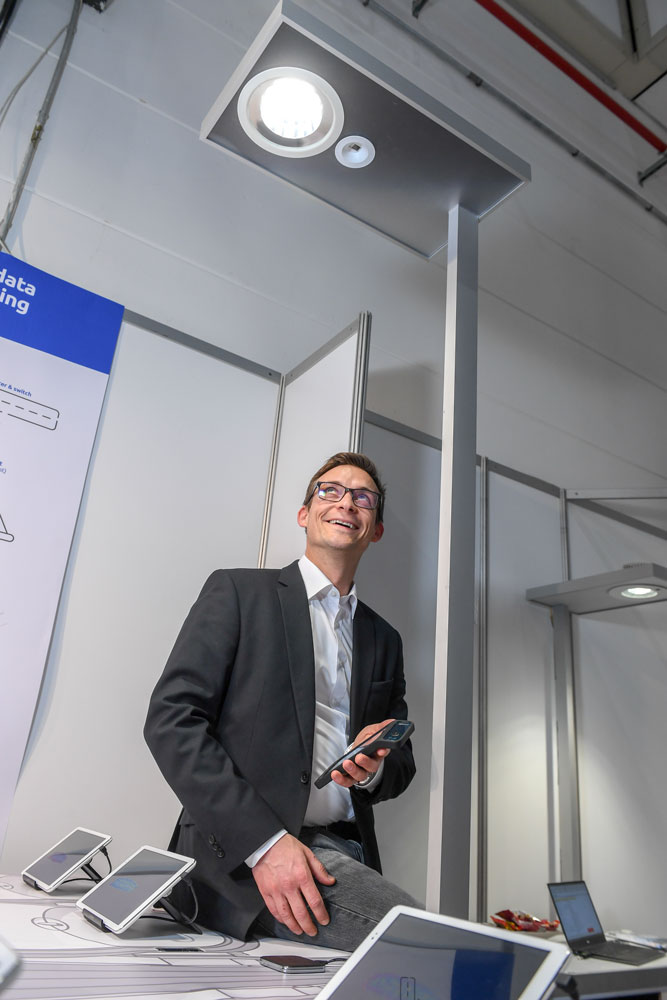AeroLiFi says it is getting closer to bringing to market a solution that transmits IFE data and allows internet connectivity through LED lights in the cabin ceiling.

BillyPix
Transmission of data through light waves instead of microwaves reduces the risk of hacking, says the company, which has led to interest in the system for flight critical-applications in the cockpit.
“It’s not impossible to hack into a LiFi network, just very hard. You have to get between the light source and the receiver. In an aircraft, that effectively means you need to be sitting on someone’s knee – and that’s very noticeable,” says AeroLiFi managing director Birger Timm.
LiFi can use both visible light and infrared, meaning access points can continue working day and night. Every LED bulb is a potential access point, and the system needs only the server and backbone to operate.
“LiFi is perfect for the aircraft cabin because it requires minimal physical infrastructure, it provides stable and consistent data transmission, and it’s safe,” says Timm.
While each access point is capable of powering 16 devices, AeroLiFi recommends connecting fewer devices per bulb to ensure a consistent data stream for multiple people in a confined space.
“LiFi provides a stable communications link that doesn’t degrade, and has enough capacity for each passenger to stream HD and 4K content,” Timm says.
Stability is aided by the integration of Cadami’s coded caching technology. This also ensures that the flow of content is not interrupted if the light source is blocked, for example, “by someone walking along the aisle and putting their hand over the receiver”, AeroLiFi says.
While entry into service is “still quite a long way off”, aeroLiFi says it is getting closer to introducing its product to the aircraft cabin.
Source: Flight Daily News


























